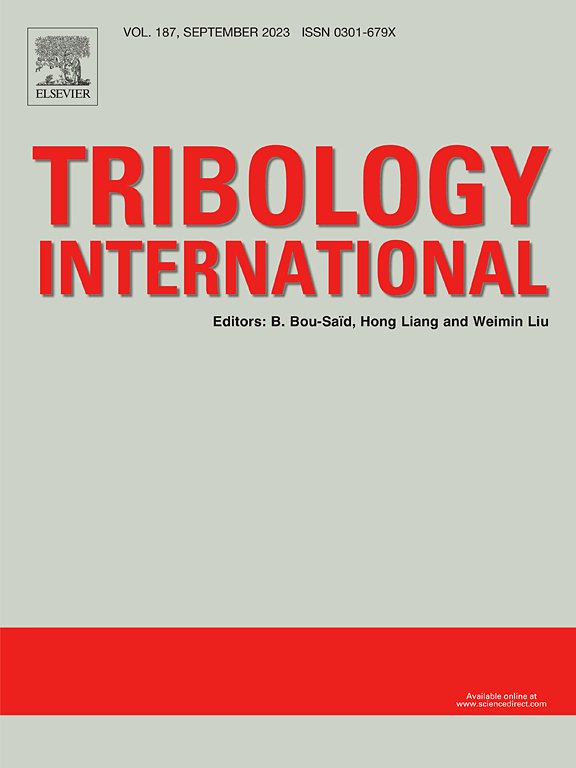Effects of sphere size and fracture parameters on adhesive wear in elastic-plastic spherical microcontacts
IF 6.1
1区 工程技术
Q1 ENGINEERING, MECHANICAL
引用次数: 0
Abstract
The present study examines how sphere size and fracture parameters influence adhesive wear between an elastic-plastic gold sphere and a rigid flat. The sphere is subjected to combined normal loading and tangential displacement. To this end, the finite element (FE) method is employed. The adhesive pressure, derived from the Lennard-Jones (LJ) potential, is implemented on both the spherical and rigid flat surfaces via a user subroutine. The full stick contact condition is employed between the sphere and the rigid flat. The Johnson-Cook (JC) failure and fracture energy criteria are employed to capture damage initiation and evolution, respectively, during the tangential displacement. The simulation results reveal that the influence of adhesion on dimensionless wear volume and wear rate diminishes as the sphere radius increases from 0.5μm to 5μm, particularly when the dimensionless normal load is smaller than 2.5. Additionally, the dimensionless wear volume and wear rate reach their peaks at dimensionless fracture energies of 1.0 and 1.4, respectively. A fracture strain of 0.5 results in the maximum values for both dimensionless wear volume and wear rate. Finally, the influence of dimensionless fracture energy and fracture strain on fracture propagation mode is explored.
求助全文
约1分钟内获得全文
求助全文
来源期刊

Tribology International
工程技术-工程:机械
CiteScore
10.10
自引率
16.10%
发文量
627
审稿时长
35 days
期刊介绍:
Tribology is the science of rubbing surfaces and contributes to every facet of our everyday life, from live cell friction to engine lubrication and seismology. As such tribology is truly multidisciplinary and this extraordinary breadth of scientific interest is reflected in the scope of Tribology International.
Tribology International seeks to publish original research papers of the highest scientific quality to provide an archival resource for scientists from all backgrounds. Written contributions are invited reporting experimental and modelling studies both in established areas of tribology and emerging fields. Scientific topics include the physics or chemistry of tribo-surfaces, bio-tribology, surface engineering and materials, contact mechanics, nano-tribology, lubricants and hydrodynamic lubrication.
 求助内容:
求助内容: 应助结果提醒方式:
应助结果提醒方式:


